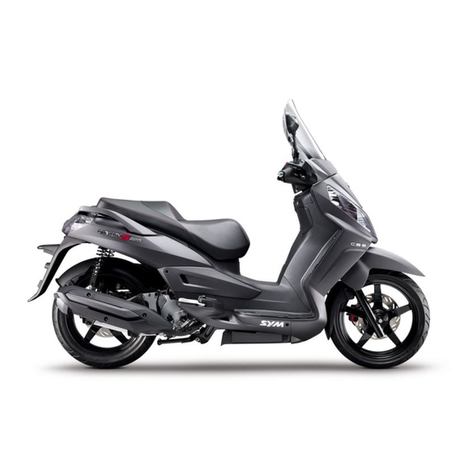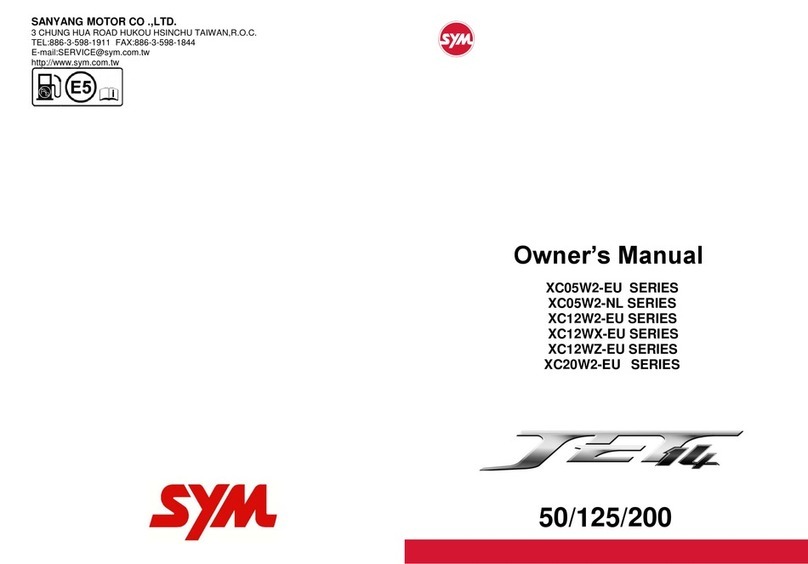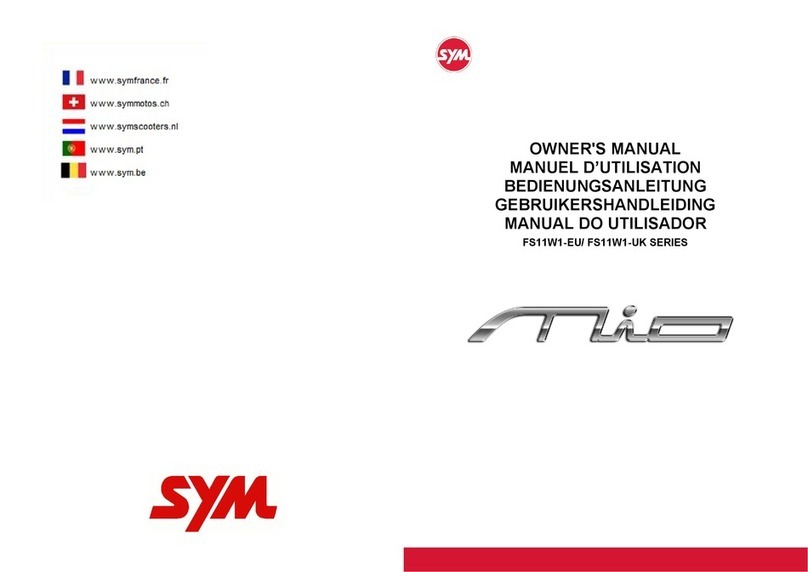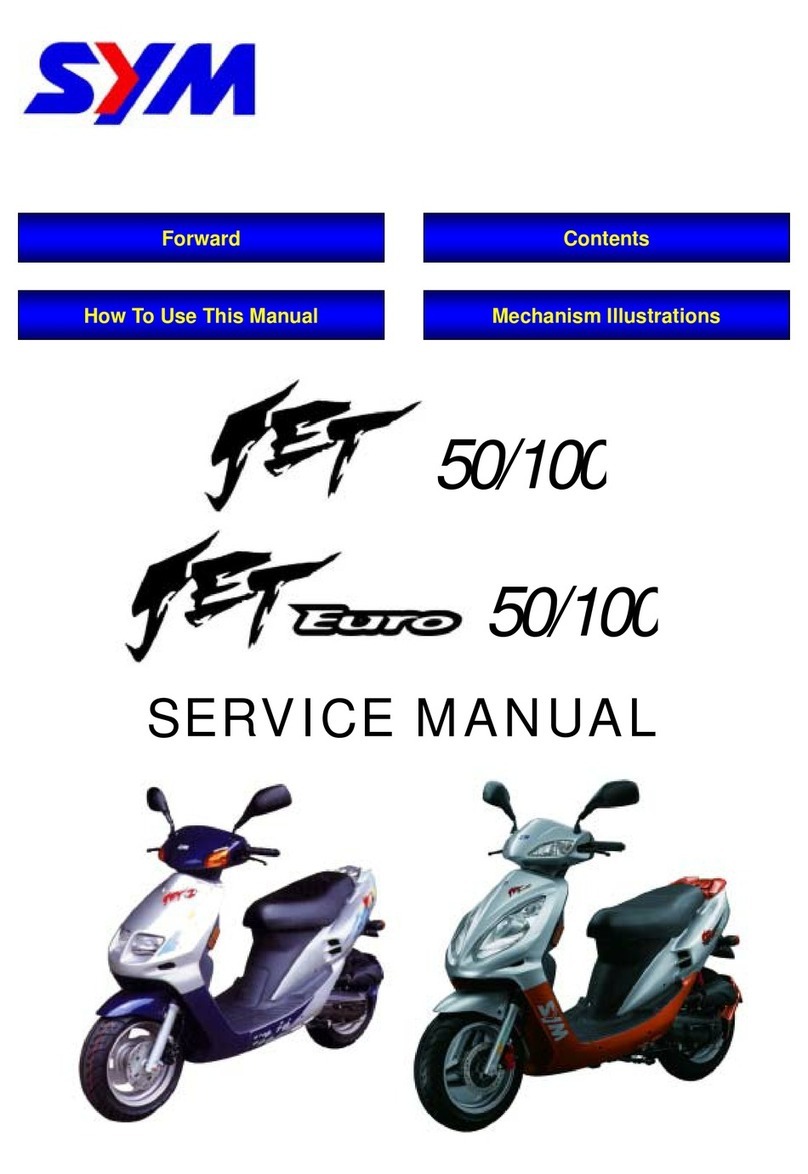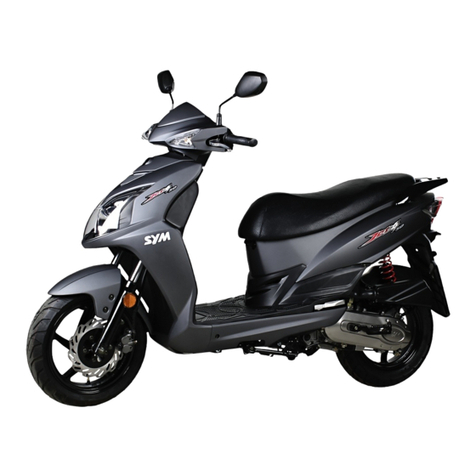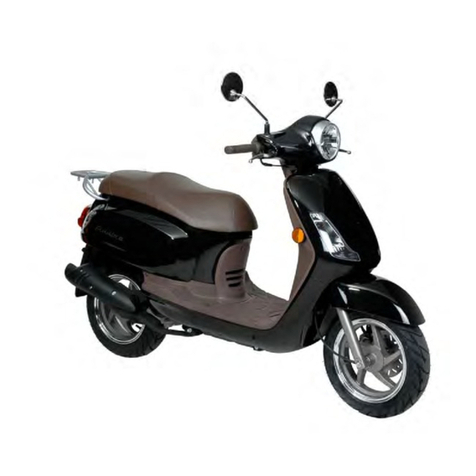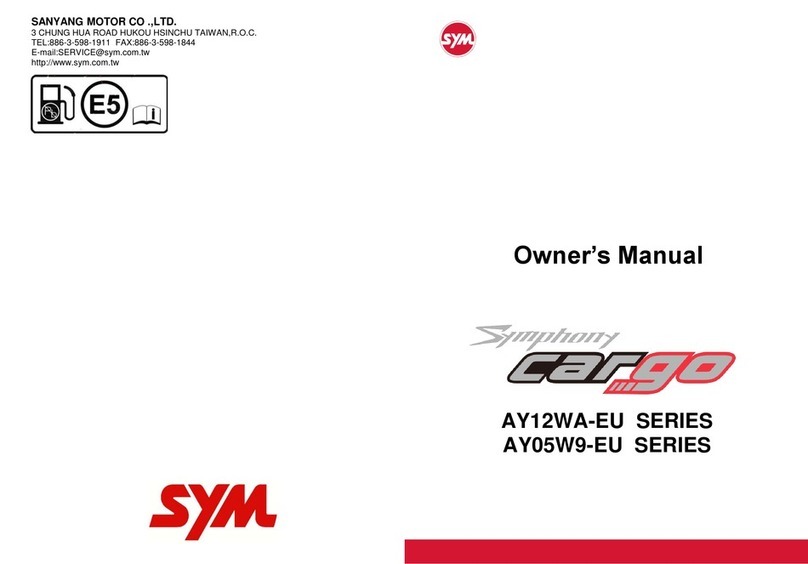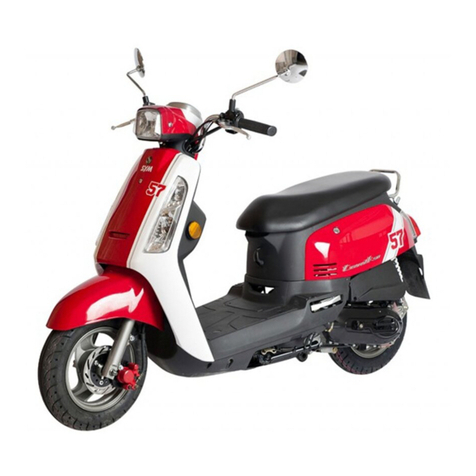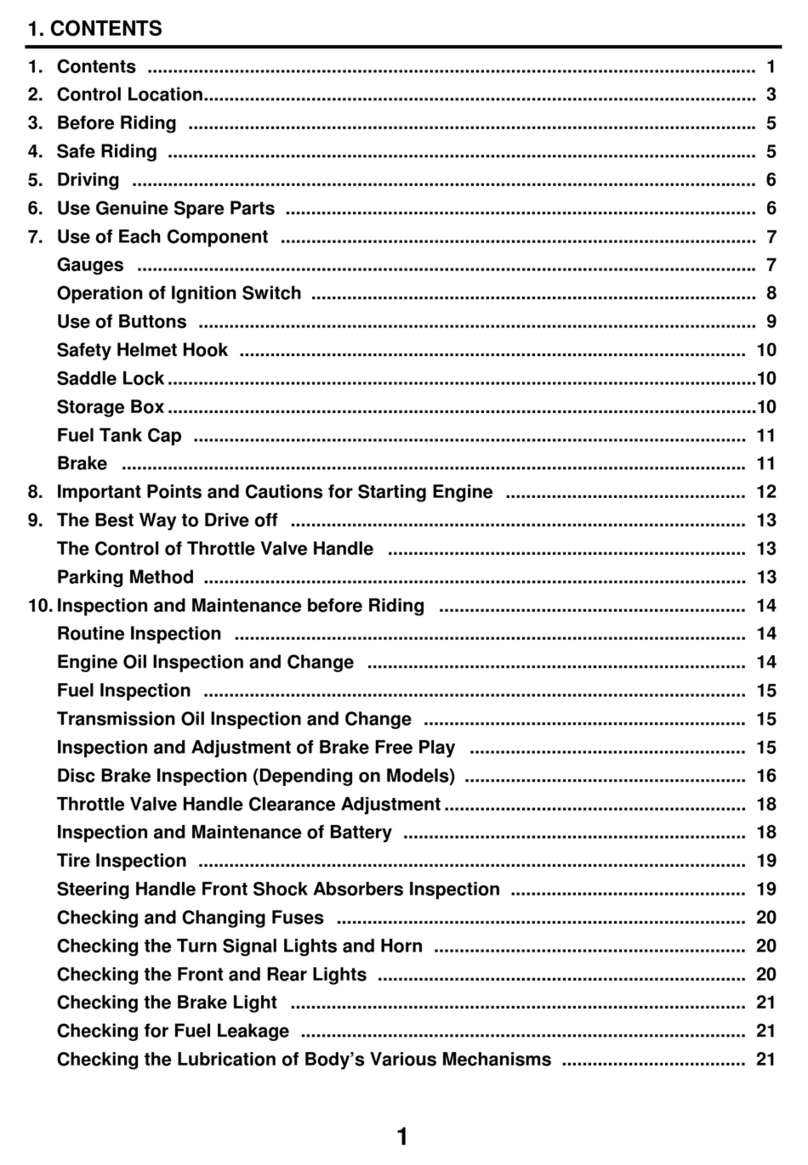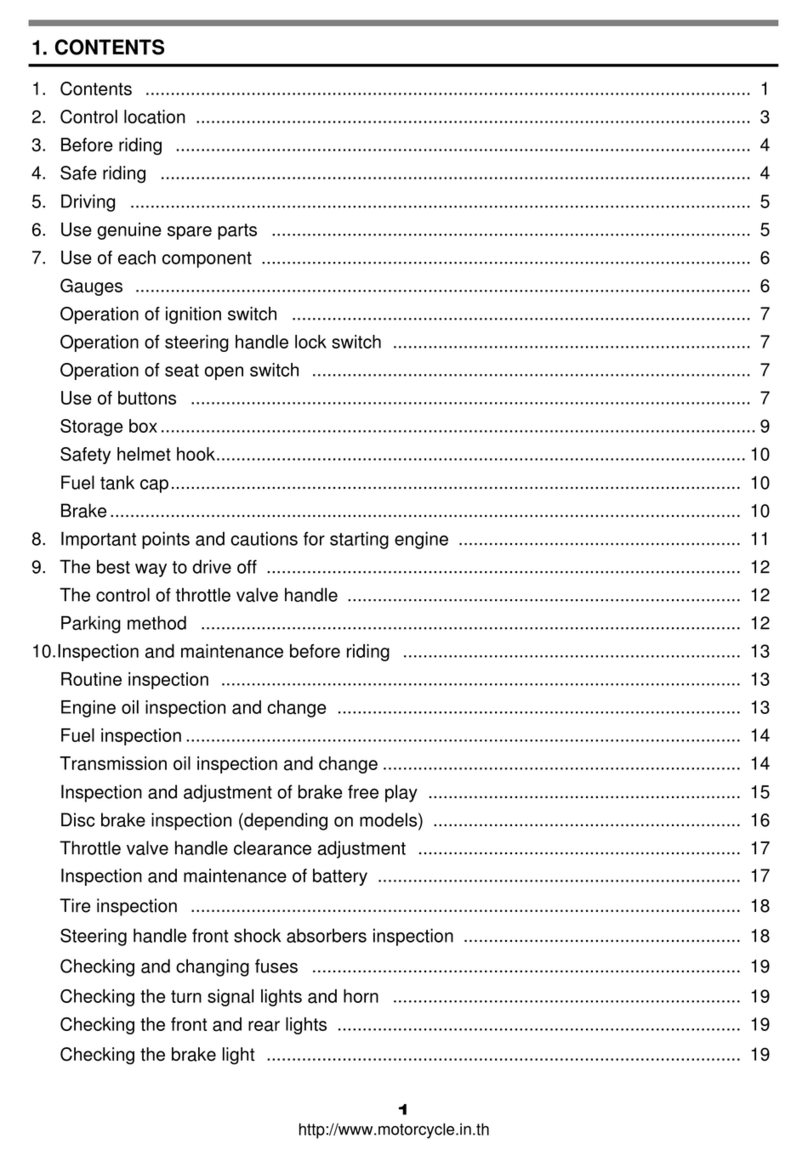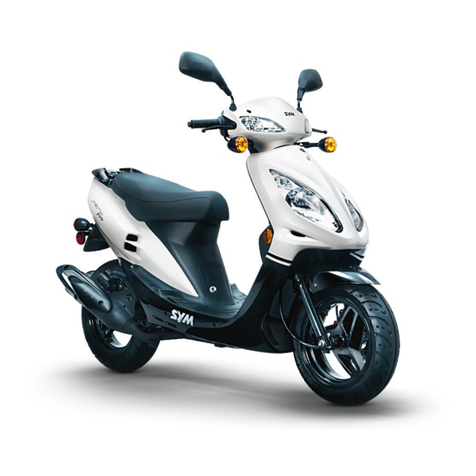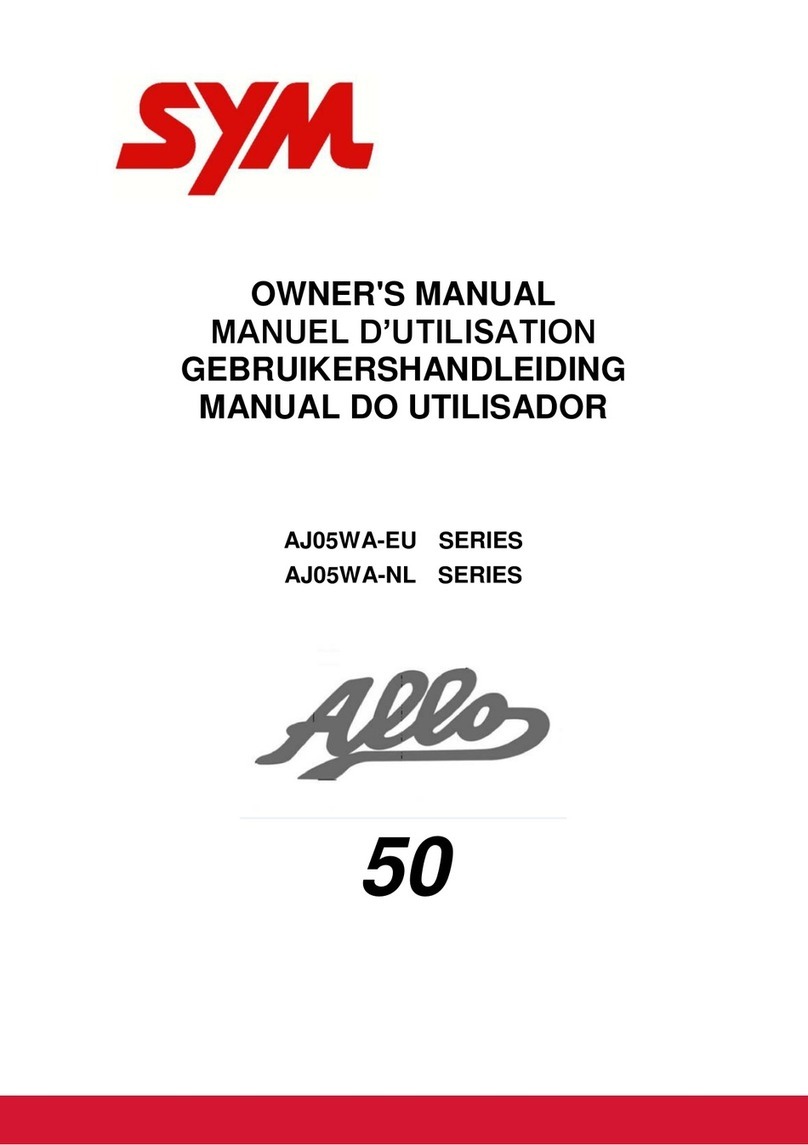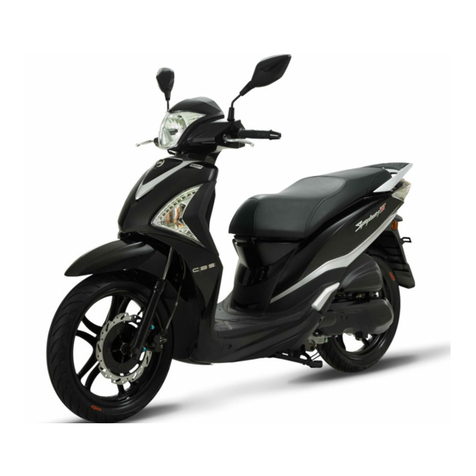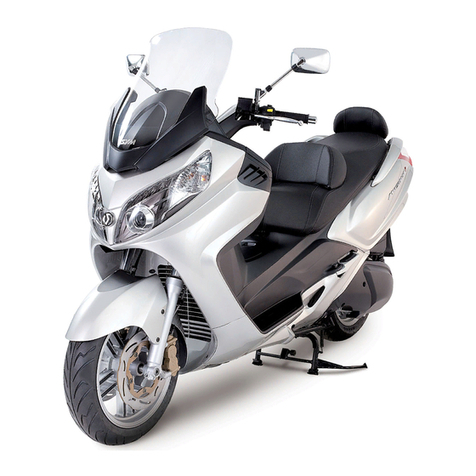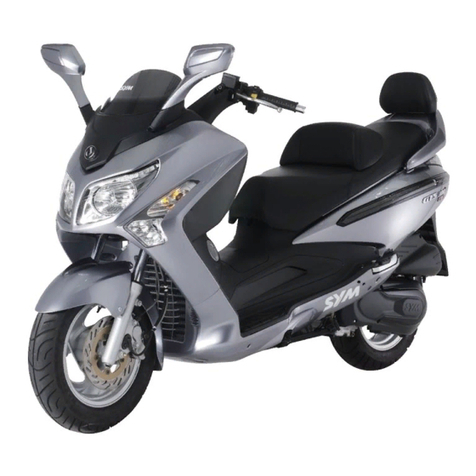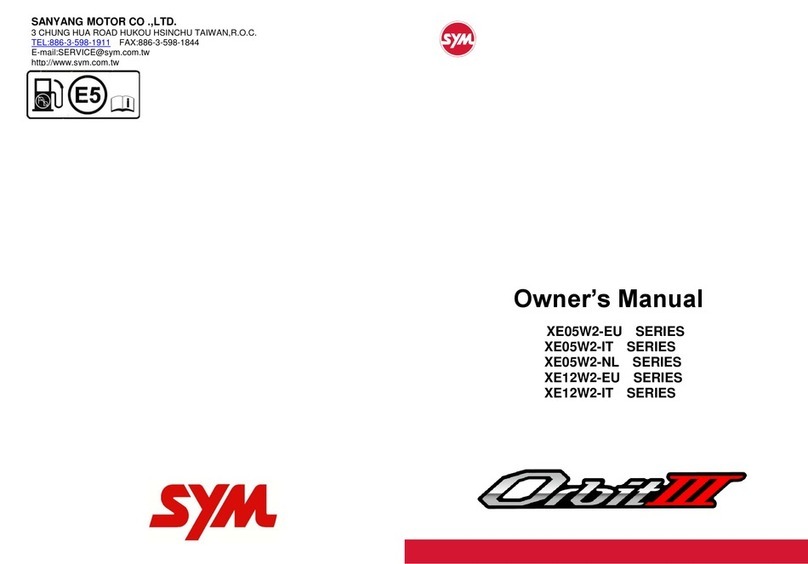1. Contents ........................................................................................................................ 1
2. Control Location ............................................................................................................ 3
3. Before Riding ................................................................................................................ 4
4. Safe Riding .................................................................................................................... 4
5. Driving ........................................................................................................................... 5
6. Use Genuine Spare Parts ............................................................................................. 5
7. Use of Each Component ............................................................................................... 6
Gauges ........................................................................................................................... 6
Operation of Ignition Switch ............................................................................................... 9
Use of Buttons ............................................................................................................... 10
Engine control switch ...................................................................................................... 13
Storage Box ......................................................................................................................13
Pillion Step........................................................................................................................13
Fuel Tank Cap ............................................................................................................... 14
Brake ............................................................................................................................ 15
Parking brake ................................................................................................................ 15
8. Important Points and Cautions for Starting Engine ..................................................... 16
9. The Best Way to Drive off ........................................................................................... 17
The Control of Throttle Valve Handle ................................................................................. 17
Parking Method .............................................................................................................. 17
10.Inspection and Maintenance before Riding ................................................................. 18
Routine Inspection .......................................................................................................... 18
Engine Oil Inspection and Change .................................................................................... 18
Fuel Inspection .............................................................................................................. 20
Transmission Oil Inspection and Change ........................................................................... 20
Inspection and Adjustment of Brake Free Play ................................................................... 21
Brake lever adjustment knob ............................................................................................ 21
Disc Brake Inspection ...................................................................................................... 22
Throttle Valve Handle Clearance Adjustment ..................................................................... 22
Inspection and Maintenance of Battery .............................................................................. 23
Tire Inspection ............................................................................................................... 24
Steering Handle Front Shock Absorbers Inspection ............................................................. 24
Rear Cushion Hardness Setting ....................................................................................... 25
Checking and Changing Fuses ......................................................................................... 25
Checking the Turn Signal Lights and Horn ......................................................................... 25

